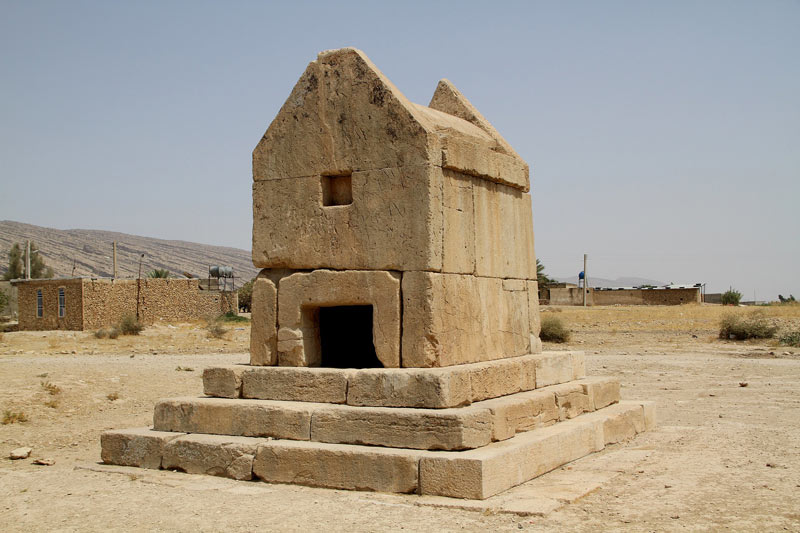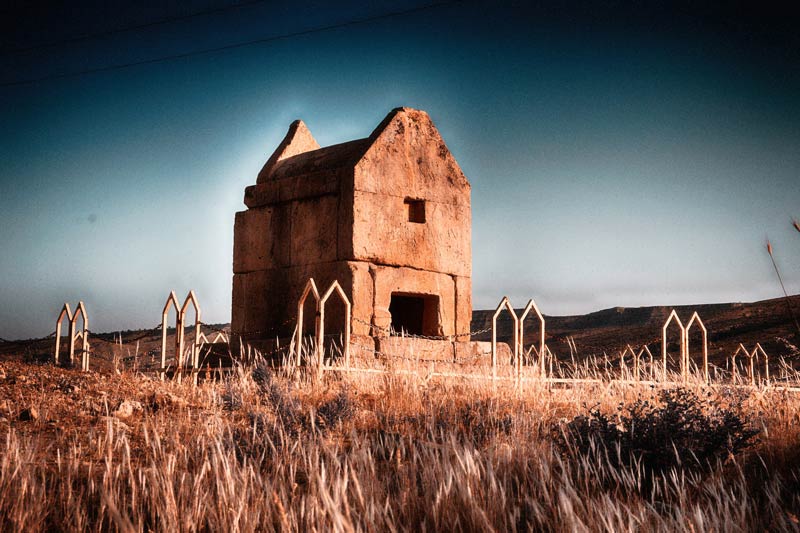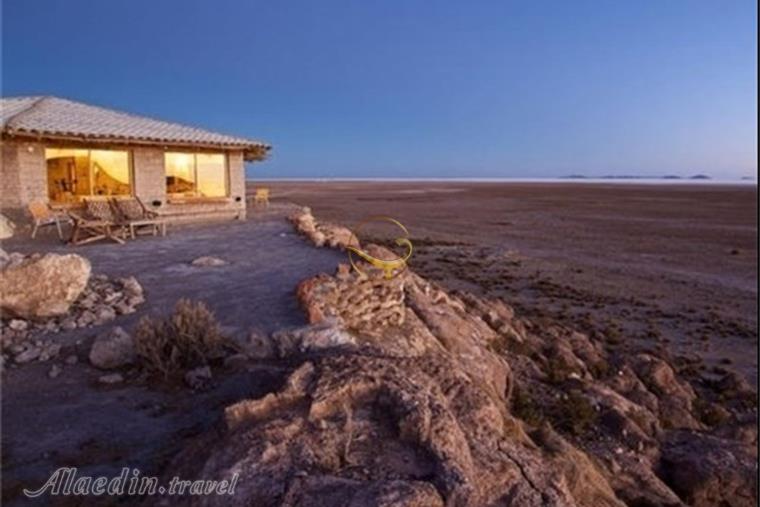Gour Dokhtar: A Glimpse into Iran’s Achaemenid-Era Mausoleum
Near Borazjan in Bushehr Province, there stands a historical structure bearing a striking resemblance to the famous tomb of Cyrus the Great. However, its modest craftsmanship becomes apparent at first glance, with stones exhibiting simple and rudimentary cuts. This historical edifice, situated in the secluded expanses of a plain, encapsulates a figure from the Achaemenid era. Although definite information about the identity of the interred individual is lacking, the structure is believed to belong to one of the ruling figures of that time.
About Gour Dokhtar:
Introduction to Gour Dokhtar:
Gour Dokhtar is considered one of the noteworthy attractions in Bushehr and is located in the plains behind Borazjan. Although its architecture is quite rudimentary, it bears a striking resemblance to the tomb of Cyrus the Great, leading most archaeologists to associate it with the Achaemenid period.
Where is Gour Dokhtar?
Gour Dokhtar is located in the city of Dashtestan, Bushehr Province, in the meadows behind Par Mountain.
Access to Gour Dokhtar:
To reach Gour Dokhtar, one must first head to the village of Pasht Par. Travel towards Dalki from Borazjan, pass through Dalki, and you’ll reach the Namazgah Bridge. At the end of the bridge, there’s a secondary road that needs to be taken. Passing through the mountainous path, you’ll go through the villages of Tang Darkesh and Rood Faryaab, reaching the city of Tang-e Aram. Two kilometers south of Tang-e Aram, there’s an asphalt side road. Enter this road and continue until passing through the villages of Agha Amirahmad and Kaftaro. After the Takteh Pass and crossing the hills, you’ll arrive at Pasht Par.
Architecture of Gour Dokhtar:
Gour Dokhtar is a rectangular structure with a total height of 4.45 meters. It features a vaulted roof and is constructed using large cream-colored stone slabs. The building is set on a stone platform, and its primary foundation includes rubble and river sand. The main structure and initial base are built on this foundation. Three rows of stones are arranged in a staircase pattern on the platform leading to the main chamber. The bottom row, resting on the ground, is 5.10 meters long and 4.40 meters wide.
The height of the stones, arranged in a stair-like fashion, is 34 centimeters. The upper chamber, located above the stairs, has dimensions of 3.40 meters in height, 2.95 meters in length, and 2.30 meters in width. The thickness of the stone walls of the building is approximately 75 centimeters. The tomb chamber inside measures 2.20 meters in length and 1.55 meters in width, with a height from the floor to its flat ceiling being 2.50 meters.

Gour Dokhtar’s History:
In the years 1380 and 1382, Ali Akbar Sarfaraz conducted an investigation on Gour Dokhtar and the Bzpar Plain. He attributed Gour Dokhtar to the early Achaemenid kings and identified the upper tomb as the burial site of Chishpish’s Elamite wife, the mother of Cyrus the Great. However, this is just one of several differing opinions regarding the occupant of this mausoleum.
Due to its historical significance, Gour Dokhtar is registered as item number 1897 in the National Heritage List of Iran.
Tips for Visiting Gour Dokhtar:
Given its historical value, Gour Dokhtar is a designated national heritage site. Visitors are advised to respect the site’s cultural and historical significance while enjoying its architectural and historical beauty.
Who is Buried in Gour Dokhtar?
Gour Dokhtar was discovered by Belgian archaeologist Louis Vanden Berg in 1339 HS. Initially believed to be the tomb of Chishpish or Cyrus the Younger, Ali Reza Shapour Shahbazi later identified it as the mausoleum of Cyrus the Small, the son of Chishpish.
History of Gour Dokhtar:
Most researchers agree that Gour Dokhtar belongs to the Achaemenid period, but there are differing opinions regarding the specific era and the king or prince associated with it.
Evidence suggests that Gour Dokhtar predates the tomb of Cyrus the Great in Pasargadae. If it were constructed after Cyrus the Great’s tomb, it would likely have a more sophisticated architecture, contrasting with its current rudimentary design.
Tips for Visiting Gour Dokhtar:
– Admission to Gour Dokhtar is free.
– Visit during daylight hours and respect the historical site.
– The monument has suffered damage, so avoid causing further harm during your visit.
– Respect local beliefs and consider buying local products to contribute to the region’s economy.
Frequently Asked Questions:
– Where is Gour Dokhtar located?
Gour Dokhtar is in Bushehr Province, Dashtestan County, in the meadows behind Par Mountain.
– What is the access route to Gour Dokhtar?
Follow the instructions provided earlier for directions.
– When does the history of Gour Dokhtar date back to?
Most researchers believe it dates back to the Achaemenid era.
– Who is buried in Gour Dokhtar?
The occupant’s identity is uncertain, with theories ranging from Cyrus’s mother to his daughter or sister.








